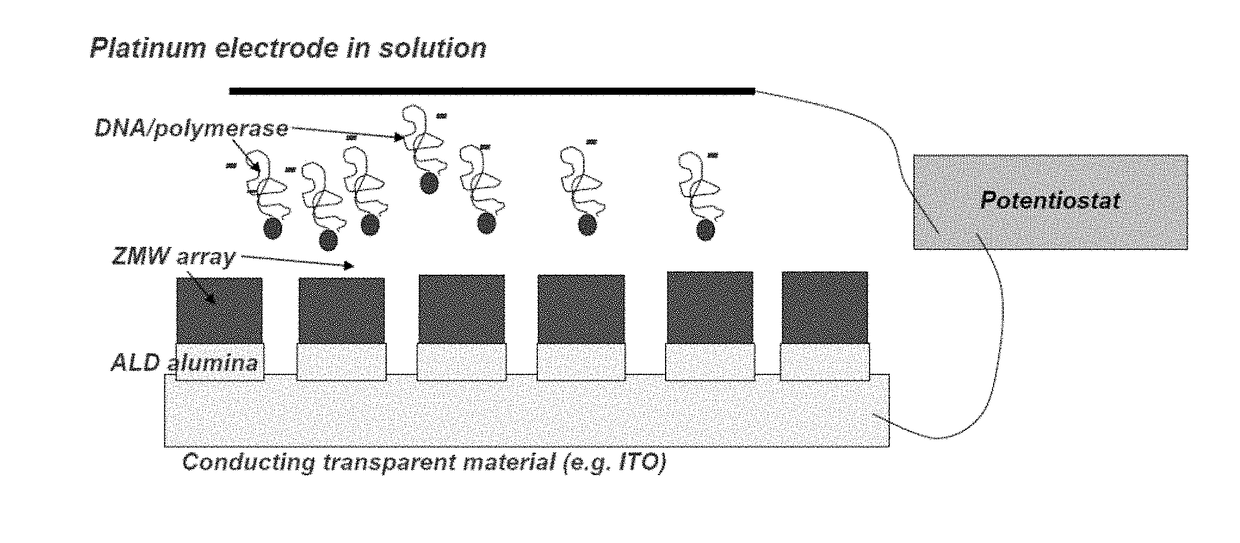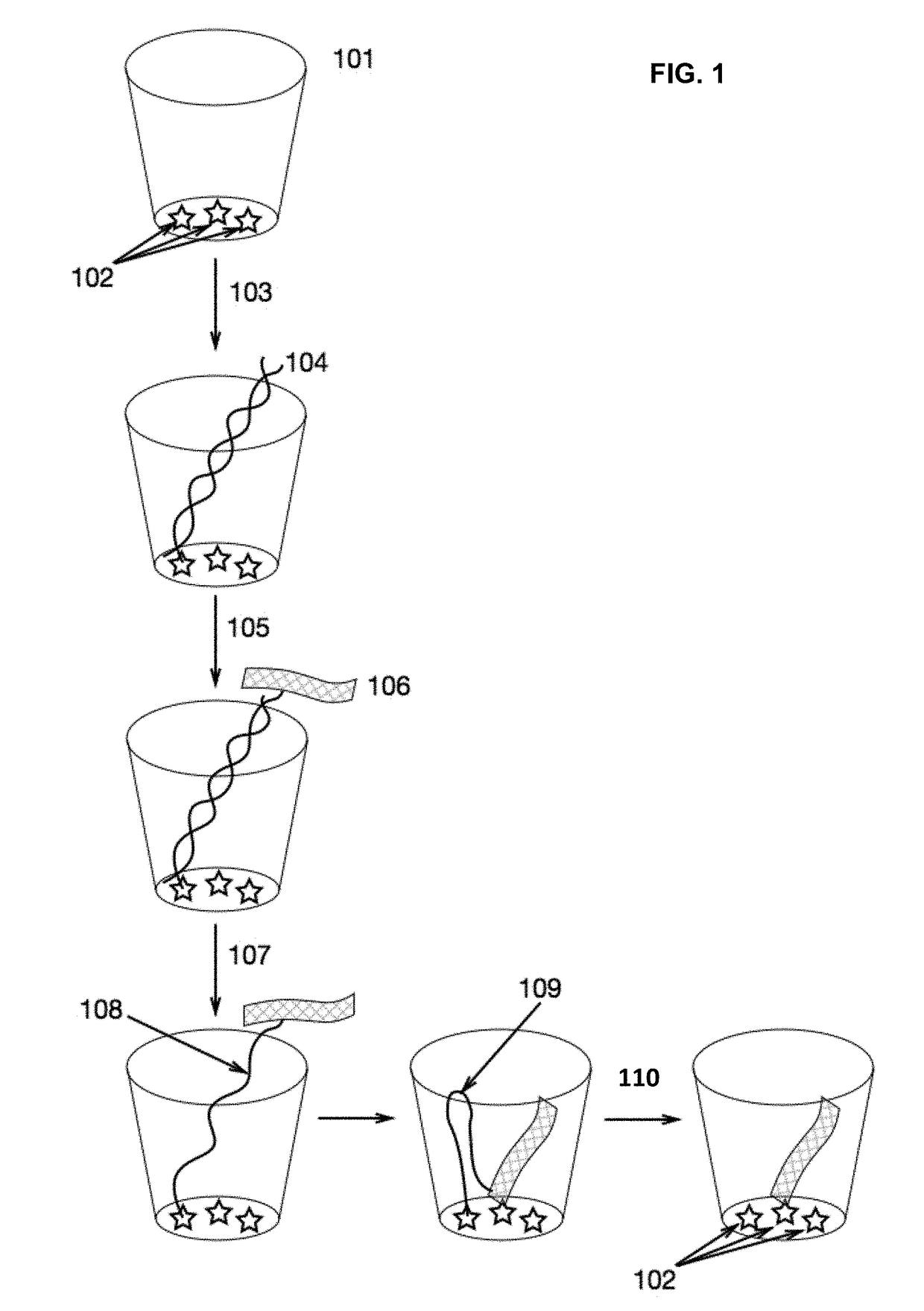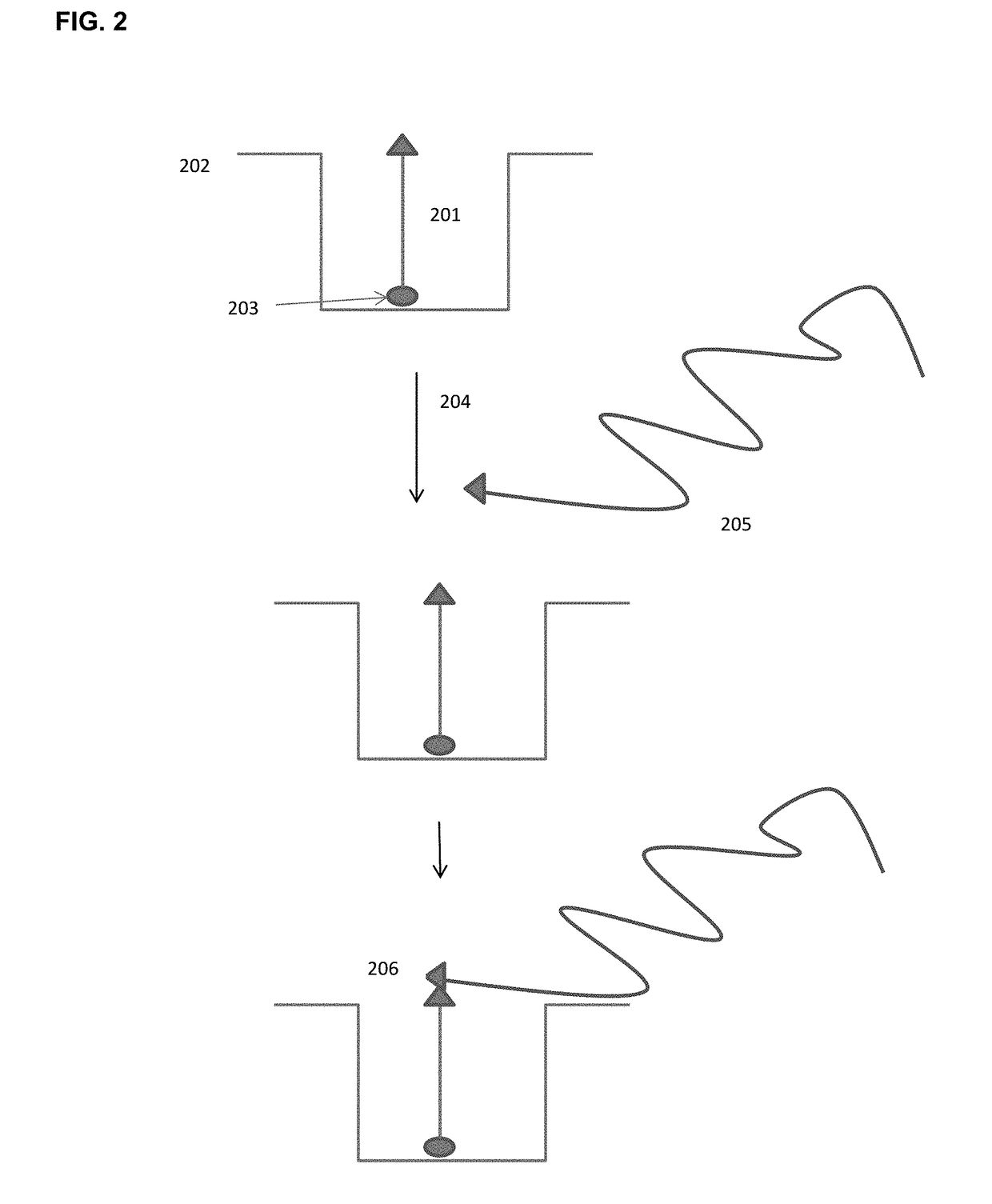Methods and Compositions for Delivery of Molecules and Complexes to Reaction Sites
a technology of complexes and molecules, applied in the field of molecular biology and molecular medicine, can solve the problems of significant entropic barriers to loading, the failure of single molecule analysis to perform single molecule analysis, etc., and achieve the effect of increasing the density of loading and increasing the efficiency of loading
- Summary
- Abstract
- Description
- Claims
- Application Information
AI Technical Summary
Benefits of technology
Problems solved by technology
Method used
Image
Examples
example 1
Tethered Nucleic Acid Reagent for Use in Helix Drive Methods
[0235]An exemplary route for preparing a tethered nucleic acid for use in the helix drive methods described herein is provided in FIG. 14. As pictured in FIG. 14, two DNA fragments that are mirror images of each other (i.e., the top strand of 1401 is identical to the bottom strand of 1402) are subjected to PCR amplification. 1401 has a biotin containing capture moiety (1403) added to the 5′ end of one strand through the PCR reaction. The resultant products are then subjected to restriction endonuclease digestion to create overhangs that are complementary to adaptor 1404. Sticky end ligation joins the two fragments, creating a double stranded nucleic acid where each strand contains self-complementary regions (i.e., region 1405 and 1406 of the top strand are complementary to each other). A terminal transferase reaction adds a ddNTP-azido group to the 3′ end of both strands, which can allow for further attachment of moieties f...
example 2
Tethered Nucleic Acid Reagent for Use in Guidewire Methods
[0241]An exemplary route for preparing a tethered nucleic acid and using it in accordance with guidewire methods described herein is schematically illustrated in FIG. 17. This guidewire molecule is generally used to load complexes into deep nanoscale wells. An exemplary DNA molecule acting as a tether has a self-primed adapter (SP) at one end and an amino-adapter at the other end which can be converted into bis-biotins (or clusters of biotins for even more efficient capture). The bis-biotins can be protected by a labile streptavidin (SA) (or bisbiotins can be added later to the amino-adapter). The tether DNA is allowed to complex at the SP-adapter with a strand-displacing SA-polymerase (Pol) (e.g., wild type Phi29 Pol-SA, which does not use nucleotide analogs having six phosphate groups (dN6P) for incorporation). This Pol is then locked onto the tethering DNA, e.g., through reaction of a chemical cross-linker as detailed here...
example 3
Tethered Nucleic Acid Reagent for Use in Winching / Fishing Methods
[0242]An exemplary route for preparing a tethered nucleic acid for use in Winching / Fishing methods described herein includes the following work flow:
[0243](1) Create the fishing / winching sequence by:[0244]PCR reaction of a 1-2 kb template with a blunt end restriction site near one end;[0245]add SmrtBell™ hairpins[0246]clean up SmrtBell™[0247]restriction digest to take one hairpin off to expose sticky end (although these methods will work with blunt ends as well)[0248]ligate on sticky overhang or use existing sticky overhang[0249]clean up one hairpin with overhang template[0250]anneal primer[0251]bind polymerase with excess template to polymerase which increases the cleanliness of the subsequent sequencing[0252]to the primed hairpin add nucleotide lock or covalent polymerase locking domain or even biotin lock
[0253](2) Create Template molecules by:[0254]Shear to appropriate size[0255]Optional cleanup of fragments[0256]Li...
PUM
| Property | Measurement | Unit |
|---|---|---|
| diameter | aaaaa | aaaaa |
| diameter | aaaaa | aaaaa |
| depth | aaaaa | aaaaa |
Abstract
Description
Claims
Application Information
 Login to View More
Login to View More - R&D
- Intellectual Property
- Life Sciences
- Materials
- Tech Scout
- Unparalleled Data Quality
- Higher Quality Content
- 60% Fewer Hallucinations
Browse by: Latest US Patents, China's latest patents, Technical Efficacy Thesaurus, Application Domain, Technology Topic, Popular Technical Reports.
© 2025 PatSnap. All rights reserved.Legal|Privacy policy|Modern Slavery Act Transparency Statement|Sitemap|About US| Contact US: help@patsnap.com



